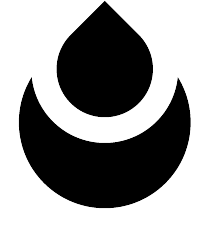Understanding Shoulder Pain
To effectively manage and treat shoulder pain, it’s crucial to understand its common causes and associated symptoms. This can help you identify the problem early and seek the appropriate treatment, including physiotherapy for shoulder pain.
Common Causes of Shoulder Pain
Shoulder pain can stem from various sources, both acute and chronic. Knowing the underlying causes can aid in diagnosis and treatment.
- Rotator Cuff Injuries: Tendinitis or tears in the rotator cuff are frequent reasons behind shoulder discomfort. Learn more about physiotherapy for rotator cuff injuries.
- Frozen Shoulder: Stiffness and pain due to adhesive capsulitis, commonly known as frozen shoulder, can hinder shoulder mobility. For solutions, explore physiotherapy for frozen shoulder.
- Arthritis: Osteoarthritis or rheumatoid arthritis can lead to inflammation and pain in the shoulder joint. Discover how physiotherapy for arthritis can help.
- Bursitis: Inflammation of the bursa, a small fluid-filled sac, often results from repetitive motion.
- Dislocated Shoulder: A traumatic injury can cause the upper arm bone to pop out of the shoulder socket.
- Fractures: Any break in the bones, such as the collarbone or humerus, can lead to significant shoulder pain.
- Tendonitis: Overuse during activities like sports can cause inflammation in the tendons.
Symptoms of Shoulder Pain
Identifying the symptoms associated with shoulder pain is vital for prompt diagnosis and effective treatment. The symptoms can vary depending on the root cause but generally include the following:
- Pain Location and Intensity: The pain might be localized to a specific spot in the shoulder or radiate down the arm. It can range from mild discomfort to severe pain.
- Stiffness: Limited range of motion and difficulty moving the shoulder are common symptoms.
- Swelling: Inflammation and swelling might be present around the shoulder joint.
- Weakness: Difficulty lifting objects or weakness in the arm can be a key indicator.
- Clicking or Popping: Sensation or sound of clicking or popping during shoulder movement.
- Tenderness: The shoulder may be tender to touch and sensitive to pressure.
| Symptom | Description |
|---|---|
| Pain Location | Localized or radiating pain |
| Stiffness | Limited range of motion |
| Swelling | Visible inflammation around the joint |
| Weakness | Difficulty lifting or using the arm |
| Clicking/Popping | Sensation or sound during movement |
| Tenderness | Sensitivity to touch or pressure |
Recognizing these symptoms and their potential causes is the first step towards seeking appropriate physiotherapy treatment to alleviate shoulder pain. Understanding this can lead to more effective management strategies and better outcomes for your health.
The Role of Physiotherapy
Exploring the role of physiotherapy in managing shoulder pain is crucial for effective treatment. Physiotherapy offers a holistic approach to pain relief and rehabilitation, focusing on restoring function and enhancing the quality of life.
How Physiotherapy Can Help
Physiotherapy for shoulder pain involves several targeted interventions designed to address the root cause of discomfort. These methods are personalized to suit individual needs, promoting recovery and preventing future injuries.
Key Components of Physiotherapy for Shoulder Pain:
- Assessment and Diagnosis: A thorough evaluation to identify specific issues.
- Manual Therapy: Hands-on techniques to improve shoulder mobility.
- Exercise Programs: Prescribed exercises to strengthen muscles and enhance function.
- Education: Guidance on posture and activities to avoid strain.
Benefits of Physiotherapy for Shoulder Pain
Physiotherapy offers numerous benefits for individuals experiencing shoulder discomfort. These advantages extend beyond mere pain relief, contributing to overall well-being and functionality.
Advantages of Physiotherapy for Shoulder Pain:
- Pain Reduction: Alleviates acute and chronic shoulder pain.
- Improved Mobility: Restores range of motion and flexibility.
- Enhanced Strength: Builds shoulder muscle strength to support joint health.
- Injury Prevention: Reduces the risk of future shoulder injuries.
| Benefit | Description |
|---|---|
| Pain Reduction | Alleviates acute and chronic shoulder pain |
| Improved Mobility | Restores range of motion and flexibility |
| Enhanced Strength | Builds shoulder muscle strength |
| Injury Prevention | Reduces risk of future shoulder injuries |
For more on how physiotherapy can help with other types of pain, visit our articles on physiotherapy for back pain, physiotherapy for neck pain, and physiotherapy for hip pain.
Understanding these benefits underscores the importance of seeking professional help for your shoulder pain. A qualified physiotherapist can develop a treatment plan tailored to your needs, ensuring optimal recovery and long-term health. Explore more about finding the right physiotherapy clinic in your area with our guide on physiotherapy near me.
Treatment Approaches
Effective treatment for shoulder pain through physiotherapy involves a systematic approach. This includes thorough assessment and diagnosis, formulating individualized treatment plans, and employing various techniques.
Assessment and Diagnosis
Accurate assessment and diagnosis are crucial for effective treatment. Your physiotherapist begins by understanding your medical history and the specifics of your shoulder pain. This often involves:
- Detailed questioning about your pain duration, intensity, and any activities that exacerbate or alleviate it.
- Physical examination to evaluate range of motion, muscle strength, and joint stability.
- Diagnostic tests like ultrasound or MRI may be recommended for a clearer picture.
| Assessment Method | Purpose |
|---|---|
| Medical History | Identifies underlying conditions |
| Physical Examination | Assesses functional limitations |
| Diagnostic Tests | Provides detailed imagery |
Individualized Treatment Plans
After a thorough assessment, your physiotherapist designs a personalized treatment plan. The plan is tailored to address your unique condition, goals, and lifestyle. Key elements of an individualized plan include:
- Goal Setting: Establishing short-term and long-term goals based on your needs.
- Exercise Prescription: Creating a regimen of specific exercises to improve strength, flexibility, and mobility.
- Education: Teaching you about ergonomics and activity modifications to prevent further injury.
Techniques Used in Physiotherapy
Various techniques are employed by physiotherapists to alleviate shoulder pain. These techniques are chosen based on your specific diagnosis and individual needs. Common techniques include:
- Manual Therapy: Hands-on techniques to mobilize joints and soft tissues.
- Therapeutic Exercises: Exercises to strengthen muscles and improve joint function.
- Modalities: Use of heat, cold, ultrasound, or electrical stimulation to reduce pain and inflammation.
- Taping: Application of specialized tape to support injured structures and facilitate healing.
| Technique | Purpose |
|---|---|
| Manual Therapy | Improves joint mobility |
| Therapeutic Exercises | Enhances strength and flexibility |
| Modalities | Reduces pain and inflammation |
| Taping | Provides support and pain relief |
For additional information on specific exercises and techniques, visit our article on physiotherapy exercises.
Physiotherapists also emphasize preventive care and maintenance strategies to avoid future shoulder issues. Understanding these treatment approaches can empower you to actively participate in your recovery process. If you need assistance finding a physiotherapist, please refer to our guide on physiotherapy near me.
Self-Care Tips
Taking care of shoulder pain at home can significantly aid your recovery and support your physiotherapy treatments. Here are some essential tips to help you manage and alleviate shoulder pain effectively.
Exercises and Stretches
Incorporating specific exercises and stretches into your daily routine can strengthen your shoulder muscles and enhance flexibility. These activities can help reduce pain and prevent future injuries.
Recommended Exercises
| Exercise | Repetitions | Sets |
|---|---|---|
| Pendulum Stretch | 10 | 2-3 |
| Cross-Body Stretch | 20-30 seconds each side | 3 |
| Shoulder Roll | 10 forward, 10 backward | 2-3 |
Sample Stretch Routine
| Stretch | Hold Time | Repetitions |
|---|---|---|
| Overhead Shoulder Stretch | 15-30 seconds | 3 |
| Doorway Stretch | 30 seconds | 3 |
| Child’s Pose | 30 seconds to 1 minute | 3 |
For detailed instructions on performing these exercises correctly, refer to our article on physiotherapy exercises.
Pain Management Strategies
Effectively managing shoulder pain involves utilizing various strategies to reduce discomfort and promote healing.
Cold and Heat Therapy
Applying cold packs can help decrease inflammation and numb sharp pain, especially right after an injury. For chronic pain, heat therapy can soothe and relax tense muscles.
| Therapy Type | Duration | Frequency |
|---|---|---|
| Cold Packs | 15-20 minutes | Every 2-3 hours |
| Heat Packs | 15-20 minutes | As needed |
Over-the-Counter Pain Relievers
Nonsteroidal anti-inflammatory drugs (NSAIDs) can help reduce pain and inflammation. Always consult with your healthcare provider before taking any medication.
Rest and Activity Modification
Giving your shoulder ample rest is crucial. Avoid activities that exacerbate the pain. Gradually reintroduce activities as you start feeling better.
To understand more about managing shoulder pain and other tips, our articles on physiotherapy for shoulder pain and physiotherapy for rotator cuff injuries offer in-depth insights.
These self-care tips can complement your physiotherapy sessions and speed up your recovery. If you need professional guidance, consult with a physiotherapist. Find a qualified physiotherapy clinic near you to get personalized treatment plans.
Prevention and Maintenance
Effective prevention and maintenance strategies are crucial for ensuring long-term relief from shoulder pain. This section discusses key aspects to consider post-treatment and ways to prevent future shoulder issues.
Post-Treatment Care
Once you have completed your physiotherapy for shoulder pain, it’s essential to continue with post-treatment care to maintain the progress you’ve made. Here are some tips:
- Follow-up Visits: Schedule regular follow-up appointments with your physiotherapist to monitor your condition and make adjustments to your treatment plan as needed.
- Home Exercises: Commit to a home exercise regimen recommended by your physiotherapist. These exercises are designed to strengthen your shoulder muscles and improve flexibility.
- Pain Management: Use ice packs or heating pads to manage any lingering discomfort. Always consult your physiotherapist before using any pain relief methods.
Recommended Home Exercises
| Exercise | Frequency | Duration |
|---|---|---|
| Shoulder Pendulum Swings | 3 times a day | 5 minutes |
| Wall Push-ups | 2 times a day | 10 repetitions |
| Arm Circles | 3 times a day | 10 repetitions |
| External Rotation Stretches | 2 times a day | Hold for 30 seconds |
For more exercises, see our article on physiotherapy exercises.
Preventing Future Shoulder Pain
Preventing future shoulder pain involves taking measures to reduce the risk of re-injury and promoting overall shoulder health.
- Ergonomic Adjustments: Ensure that your workstation is ergonomically designed to prevent straining your shoulder. Adjust your chair height and computer screen to maintain a neutral posture.
- Proper Lifting Techniques: Always use proper lifting techniques to avoid putting undue stress on your shoulders. Bend at the knees and keep the object close to your body.
- Strengthening Routines: Incorporate shoulder-strengthening exercises into your regular fitness routine. Strong shoulders are less prone to injury.
Risk Factors and Mitigations
| Risk Factor | Mitigation Strategies |
|---|---|
| Poor Posture | Practice good posture and take frequent breaks to stretch. |
| Overuse | Engage in cross-training to avoid repetitive strain injuries. |
| Lack of Exercise | Include both cardio and strength training in your routine. |
| Improper Technique | Use proper techniques in sports and daily activities. |
Learning how to prevent shoulder pain can greatly reduce the chances of reoccurrence. Visit our guides on physiotherapy for rotator cuff injuries and physiotherapy treatment for more in-depth strategies and tips.
Implementing these prevention and maintenance techniques can help you sustain a pain-free life and keep your shoulders healthy. Remember that ongoing care and attention to shoulder health are fundamental to preventing future issues.
Finding the Right Physiotherapist
Finding the right physiotherapist is essential to effectively managing shoulder pain. Consider their qualifications and experience, and use specific criteria to make an informed choice.
Qualifications and Experience
When seeking a physiotherapist, pay attention to their qualifications and experience. A qualified physiotherapist should hold a degree in physiotherapy and be licensed to practice in your state.
| Qualification | Description |
|---|---|
| Degree | Bachelor’s or Master’s in Physiotherapy |
| License | State Board License |
| Certifications | Specialty Certifications (e.g., Sports physiotherapy) |
| Experience | Years of Practice in Physiotherapy |
Knowledge about specific conditions like physiotherapy for rotator cuff injuries or physiotherapy for frozen shoulder is valuable. Experience in treating shoulder pain can indicate a physiotherapist’s capability to handle your specific needs.
Choosing the Right Physiotherapist
Choosing the right physiotherapist involves evaluating different factors beyond qualifications. Here are some criteria to consider:
- Specialization: Does the physiotherapist specialize in treating shoulder pain or related conditions?
- Reputation: What do reviews and testimonials from patients say about their service?
- Approach: Are they using modern techniques and technology in their treatment plans?
- Accessibility: Is the clinic conveniently located? Are there appointment times that fit your schedule?
For further information on what to look for in a physiotherapy clinic, read our article on physiotherapy clinic.
| Criteria | Details |
|---|---|
| Specialization | Experience in shoulder pain therapy |
| Reputation | Positive patient reviews and testimonials |
| Approach | Uses modern techniques and personalized plans |
| Accessibility | Convenient location and flexible scheduling |
Taking the time to choose the right physiotherapist will lead to more effective treatment outcomes. If in doubt, consult resources like our guide on physiotherapy near me for additional support.














